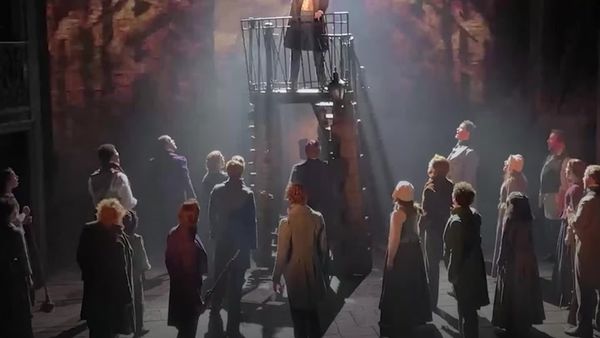
Millions of adults Australians are living with a secret shame. They’re hiding the fact they cannot read recipes or bus timetables, apply for a driver’s licence or financial support, or sign rental agreements without supervision.
The federal government has conceded it does not know how many Australians lack these basic skills. The last comprehensive study, conducted by the Organisation for Economic Cooperation and Development in 2012, put the figure at 3 million people, but no up-to-date data exists.
A new national study will soon be launched to better understand the challenge but business groups, teachers, economists and literacy campaigners have warned the figure could now be much higher, especially in Tasmania.
In 2012, the OECD found one in two adults in the state had a literacy level below three. That means they lacked the basic skills required to understand and use information from newspapers, books or magazines.
Lisa Denny, a member of the Tasmanian 100% Literacy Alliance, said declining high school literacy results since 2012 indicate the problem was now much worse, despite many commitments to improve education standards.
“You can’t fix the problem if you don’t know what the problem is,” Denny said. “So often these challenges are hidden. It can be very difficult to identify someone who cannot read and write. They’re very good at masking it because there’s a big stigma and shame attached to these challenges.”
Elizabeth Skirving, the chief executive of the peak body Rural Business Tasmania, also believed adult literacy and numeracy rates had declined and said most people would be shocked by the true figures.
“I’ve heard of an employee that would rather say they work 40 hours a week because they don’t know how to write another number, they’re too ashamed to admit that,” Skirving said.
“This is having a severe impact on the profitability and productivity of what we do. If you run a cafe, can you be confident staff can provide the right change? If you’re on a farm, are you confident someone can determine the right dose of medicine for a sheep or a cow?”
There are many theories as to why Tasmania’s literacy rate is lower than other states including a contested debate over curriculum, high-school completion rates, socio-economic challenges and a higher rate of welfare dependence.
Denny and Skirving welcomed the Albanese government’s commitment to gather reliable, up-to-date data and to “remove the barriers of shame and distrust of education”.
The skills and training minister, Brendan O’Connor, said the education system had failed these adults and “for the sake of equity, inclusion and economic growth we need to act”.
“A developed nation and advanced economy like Australia should not be letting these people down.”
The Tasmanian government has funded a long-term program to address literacy and numeracy rates. In 2012 it launched 26TEN, which works with business and community groups to improve adult education standards.
“Literacy takes a really long time to lift because, with adults, it’s not like you’re going into a classroom, like kids are doing everyday. We need to find really flexible ways of supporting people with their reading, writing and maths,” said Trish Scholwin, 26TEN’s manager of strategy.
“We’re setting a culture where you shouldn’t feel ashamed and people understand the challenges of low literacy and why that exists. Most of the time it’s not their fault and they have lots of skills and strengths in other areas.”
The Business Council of Australia and the Australian Industry Group have also become increasingly concerned about a lack of basic skills. Last year, an Ai Group report estimated 74% of businesses were affected in some way by low levels of literacy and numeracy.
Independent economist Saul Eslake, who is also a member of the 100% Literacy Alliance, said literacy rates were slowing economic growth and keeping the unemployment rate higher in Tasmania.
“That’s partly because there’s a higher proportion of Tasmanians who are over 65,” Eslake said. “But if you break it down by age group, every category has a lower proportion of Tasmanians who have a job than the national average, with the exception of 15 to 19-year-olds.
“A higher proportion of 15 to 19-year-olds are in work in Tasmania because they’re not in higher education including senior secondary school, university or Tafe.”







